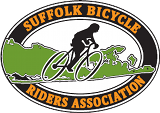So, the legend is that the lisp in Spain comes from King Ferdinand who spoke with one. Although languages evolve over time, and this has been discarded as a myth, the fact is that it started around 1500. The king and queen who ruled during "Reconquista" (or getting rid of islam) were Ferdinand and Isabela in 1492.
His Kingdom reached over Castilla, Aragon and Catalonia. Andalusia does not have a lisp, and he did not rule there. If it is true, one has to love this guy:"I am thpeaking properly, tho it ith not me but all of you" :))
First photos are from Valencia...hotel view. On our way toward the south, we stopped at this house built in a cave. Part of it is a museum, and the other part is used for living. Outside temperature 45 Celsius ( 113 F) and inside 21 ( 70 F). They say that is pretty much the temperature throughout the year w/out heat or air-conditioning.
Then we go over to Granada (pomegranate) and Alhambra (red fortress) built by muslims in 14th century. Muslims believed that the beauty of the house should be hidden inside, so on the outside are usually plain walls that hide gardens, fountains...
Court of Lions was being renovated when we were there. Coloseum inside has beautiful accoustics for summer concerts. After gardens there is a beautiful view of Granada from the fortress. At night, we climbed to the terrace of the local hotel for some sangria and more night views of Granada. The picture of me on the Roman bridge makes me feel the breeze all over again and the smell of the summer night in Granada:)
There is a district there called Albaicin - next- with winding narrow streets (where Europeans back up their trucks) of Medieval Moorish past. It is on a hill facing Alhambra, and provides best views of Alhambra. Church San Salvador built on remains of a Moorish mosque (as pretty much all the churches and cathedrals in the southern Spain). Every corner has an amazingly gifted guittar player that brings Andres Segovia back to life.
Then we are in Sevilla. Flamenco show. Those feet are hard to follow... no need for liposuction of those legs.
There was an Ibero-American Exposition World's Fair in 1929 in Sevilla. Every country donated a beautiful building and the entire southern part of the city re-developed into gardens and grand boulevards. Spaniards had to make the biggest building. On the outside you will see a round building that just looks like a bull ring... but inside breathtaking building, towers, bridges. Architect was Anibal Gonzalez who combined a mix of 1920s Art Deco and Neo-Mudejar style.
Next is Alcazar, royal palace in Sevilla where the upper levels are still used by royal family when they are visiting south.
Patio de las Doncellas (the courtyard of maidens) refers to the legend that Moors (muslims) demanded 100 virgins every year as a tribute from Christian Kingdoms in Iberia.
The story of the tribute was used as a myth to bolster the Reconquista movement. There is Cathedral of Sevilla next - 3rd largest cathedral after St. Peter's Basilica in Vatican and Saint John the Divine in England. View of Sevilla from the Giralde Tower that was originally a minaret converted to a bell tower... one can climb all the way up. There is a beautiful view of the bull ring (bull fights still exist in the south). Then Royal Palace in Alcazar and gardens.
Sevilla has green path for bikers all over, and when getting off a tram one first looks for bikers and then steps onto the side walk. I took a picture of the green path. For 26 euros one can get a yearly rental for the bike and take it from one part of the city and drop it off at the other end... This has become the practice in the entire Europe now.
There is a picture of the bottle of tinto de verano (red wine rioja with lemonade) - a well known drink in Spain. You will then see Cordoba's mosque again converted into a church in 1492.
Then BEAUTIFUL Madrid... streets, Prado museum. We drove to Toledo which is 70 km south of Madrid. Roman Bridge as entrance. Damascene art being done... steel ornaments inlaid with gold all done by hand.
At the end... last dinner in Madrid at Plaza Mayor with plenty of happy Spaniards, laughing, playing instruments... just being loud.
The very last picture is of my bike when we got back.
- Rides
- Ride Statistics
- Join/Renew SBRA Now
- NEW to SBRA?
- Forums
- Recent Posts -See what's NEW
- Rolling Wheels Newsletters
- Bike Shop Program
- Other Rides & Events Calendar
- About SBRA
- Contact SBRA
- General Information
- Be a Ride Leaders
- Ride Leader Guidelines
- SBRA COVID Guidelines
- SBRA Club Store
- Photo Gallery
- Recent Photos
- Submit Pictures
- Blogs
- Blog Reader
- FAQ

